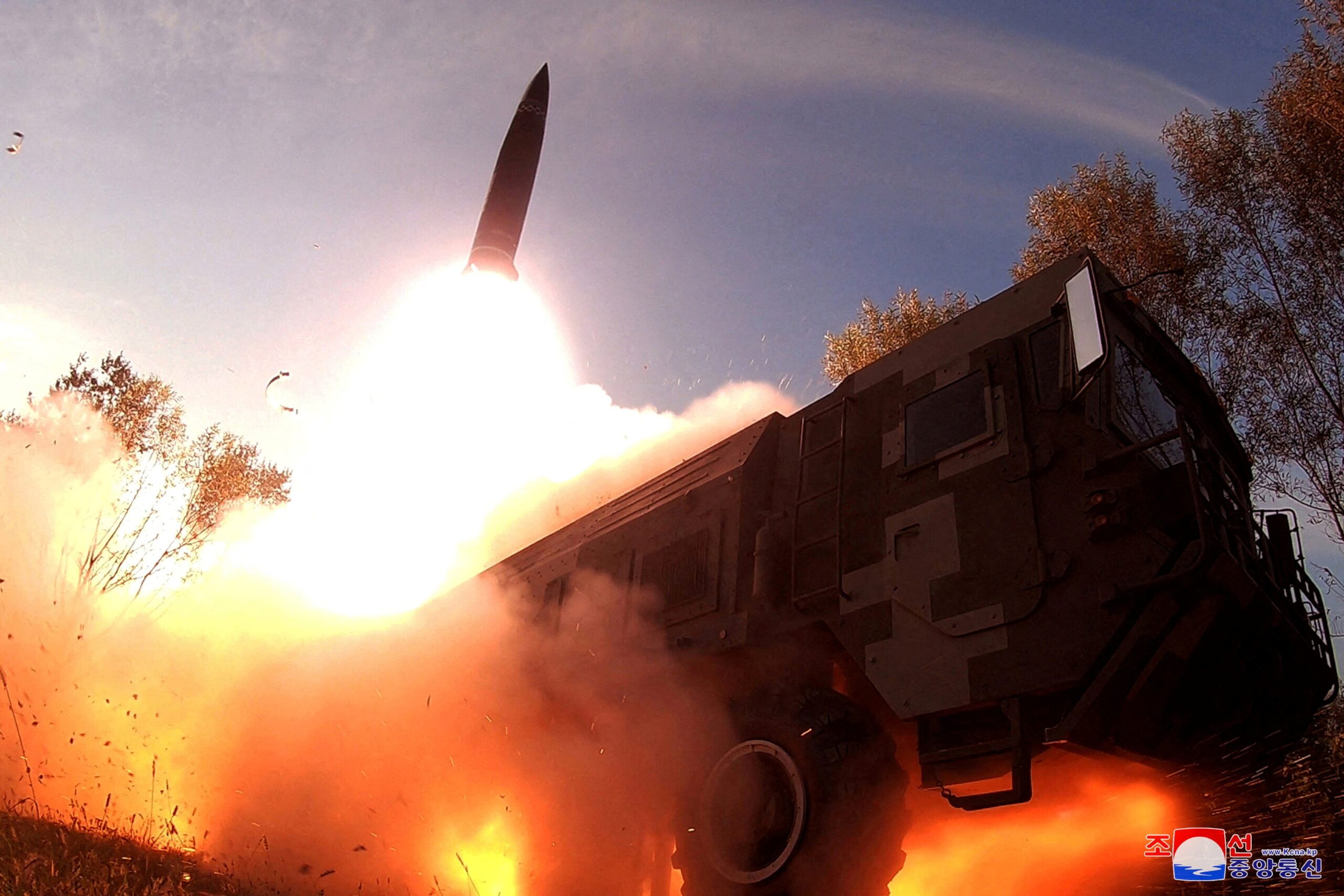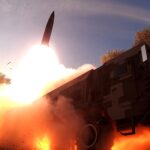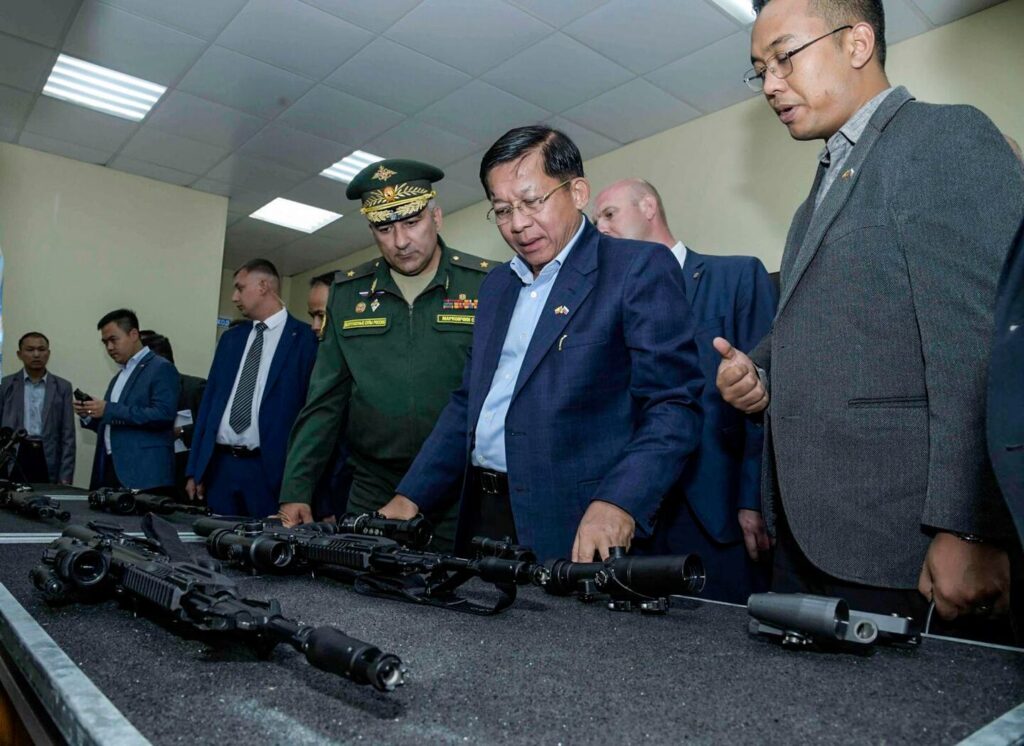MANTRAYA ANALYSIS #91: 04 AUGUST 2025
MOHAMMAD TAHA ALI
Abstract
Pakistan’s deployment of the Nasr tactical nuclear system challenges India’s No First Use policy and massive retaliation doctrine, prompting consideration of sub-kiloton weapons for battlefield deterrence. However, the existing literature reveals that tactical nuclear weapons create an illusion of limited escalation while increasing risks of miscalculation and broader nuclear conflict. The article argues that India should maintain doctrinal clarity rather than adopt tactical nuclear options, leveraging its advancing conventional capabilities, precision strike systems, and robust crisis management mechanisms.

Introduction
The resurgence of interest in low-yield or tactical nuclear weapons represents one of the most pressing strategic debates of recent times. Once confined to Cold War archives, battlefield nuclear options figure on the agendas of major powers, be it the relatively ‘new’ Russia’s tactical munitions modernisation to the United States’ hypothetical “flexible response” doctrine of the Cold War era.[1] Proponents argue that sub-kiloton warheads afford policymakers a calibrated lever of coercion, ostensibly bridging the gap between conventional warfare and all-out strategic exchange. Yet beneath this veneer of manageability, there are political, operational, and psychological hazards that demand rigorous scrutiny.[2]
In India, the debate on sub-kiloton nuclear weapons is relatively limited but occasionally surfaces in strategic circles. Former military officials and analysts have occasionally argued that these low-yield weapons could offer India greater flexibility, especially in responding to Pakistan’s tactical nuclear threats[3]. They believe sub-kiloton options might help fill the gap between conventional strikes and full-scale nuclear retaliation. However, India’s official position, guided by its No First Use (NFU) doctrine and a pledge of massive retaliation, has stayed largely unchanged. While figures like former National Security Adviser (NSA) Shivshankar Menon have hinted at the possibility of doctrinal shifts, there’s no concrete sign that the government is moving toward adopting sub-kiloton weapons.[4] For now, the idea remains more a subject of debate than policy. However, for India, the debate is no abstract intellectual exercise but a pressing regional dilemma.[5]
Pakistan’s induction of the Nasr missile system, capable of delivering warheads in the 0.5‑kiloton range against armoured spearheads, poses a direct challenge to New Delhi’s long-standing No First Use (NFU) pledge and its doctrine of massive retaliation.[6] Should India reciprocate with its own tactical arsenal or does strategic wisdom counsel continued restraint? This article, adopting an informed rigour, examines the doctrinal logic, historical precedents, and normative costs of battlefield nuclear options, and it contends that India’s security is best preserved through doctrinal clarity rather than tactical experimentation.
The Illusion of Limited Escalation
At first glance, low-yield weapons seem to offer a seductive compromise: the means to impose serious damage while arguably avoiding the spiraling reprisals of strategic arsenals. Yet the presumption that a “small” nuclear detonation equates to limited risk is deeply flawed. Historical episodes from the nascent nuclear warning shots contemplated during the Korean War to tactical planning exercises in NATO demonstrate that any breach of the nuclear taboo tends inexorably toward wider conflagration.[7] Once the fission barrier is crossed, political and military decision‑makers face immense pressure to restore deterrent credibility through an overwhelming response. The very cognitive bias that underpins the perceived safety of subkiloton use collapses under the fog of conflict, turning theoretical restraint into practical catastrophe.[8]
Pakistan’s Nasr and Doctrinal Shifts
Islamabad’s Nasr system epitomises a deliberate doctrinal pivot toward battlefield deterrence. Official communiqués[9] present Nasr as a countermeasure to India’s Cold Start doctrine, a strategy of rapid, shallow advances into Pakistani territory. By threatening early, low-yield nuclear use against armoured thrusts, Pakistan seeks to deter conventional incursions and rebalance asymmetries in air and mechanised forces. Similar rationales have emerged elsewhere. During the 1980s, the Soviet Union deployed “Tactical Nuclear Weapons” in Eastern Europe to offset NATO’s conventional superiority, while more recently, China reportedly conducted a groundbreaking test of a nuclear-capable hypersonic glide vehicle (HGV) launched via a rocket that entered low Earth orbit, circled the globe, and then re-entered the atmosphere at hypersonic speed before heading toward its target—missing by roughly two dozen miles. This unprecedented manoeuvre, first reported by the Financial Times in October 2021 [10], reportedly surprised U.S. intelligence agencies. A second test followed on August 13, 2021, featuring a similar nuclear-capable hypersonic system. By October 2023, the U.S. Department of Defense confirmed that China had tested such systems at least once, including the integration of a hypersonic glide vehicle with a fractional orbital bombardment system (FOBS)—a development that signals a strategic shift toward low-yield, precision nuclear delivery capabilities.[11]
However, the forward deployment of nuclear warheads in contested battle zones amid tenuous communications, compressed decision timelines,, and intense battlefield stress creates acute risks of miscalculation, unauthorised use or accidental detonation.[12] Rather than stabilising the battlefield, Nasr may be the spark that ignites a broader nuclear conflagration, imperilling not only Pakistan and India but regional actors such as China and the Gulf states, who watch South Asia with keen strategic interest.[13]
The Case for Doctrinal Clarity and Restraint
India’s nuclear posture rests on three interlocking pillars: Credible Minimum Deterrence, NFU, and Massive Retaliation. By explicitly eschewing battlefield nukes, New Delhi preserves a clear strategic threshold: any nuclear aggression, regardless of yield, will provoke a devastating response. This clarity bolsters deterrence by eliminating the ambiguity inherent in graduated nuclear options. It also concentrates launch authority within a tight civilian-military nexus, ensuring robust command and control safeguards and reducing the probability of hasty, decentralised decisions in crisis.
The virtue of restraint is not merely doctrinal but practical. India’s conventional forces have attained appreciable sophistication, with advanced precision‑strike aircraft, next-generation main battle tanks, and expanding drone capabilities. These assets, combined with ongoing investments in missile‑defence radars and interceptor systems, provide a credible response to mechanised thrusts without resorting to atomic munitions.[14]
Strategic Alternatives to Battlefield Nukes
Rather than diluting its nuclear doctrine, India can pursue alternative measures to reinforce deterrence at multiple levels. First, enhancing the survivability of second‑strike platforms through dispersed mobile launchers, submarine‑launched ballistic missiles, and hardened silos fortifies strategic stability. Second, expanding India’s precision conventional strike arsenal, exemplified by BrahMos cruise missiles and future hypersonic glide vehicles, addresses capability gaps that Nasr purports to exploit. Third, strengthening crisis‑management mechanisms such as dedicated hotlines with Islamabad and transparent risk‑reduction dialogues mitigates the very escalatory pressures that tac‑nukes claim to address.[15]
International experience underscores the efficacy of such approaches. During the late 1980s, U.S.–Soviet arms‑control dialogues and confidence-building measures (CBMs) dramatically reduced the salience of tactical weapons in Europe. Similarly, UK–French nuclear consultations (1994-1995) have emphasised strategic transparency over the proliferation of sub‑strategic options.
Normative and Diplomatic Costs
Adopting sub‑kiloton weapons would exact a heavy toll on India’s moral and diplomatic standing. As a nation that has championed responsible nuclear stewardship, invoking the principles of the NPT and leading calls for a Fissile Material Cut‑off Treaty, India would risk eroding its image as a constructive global actor. Such a shift could strain burgeoning defence partnerships with the United States, Australia, and Japan, all of which emphasise the importance of strategic stability and non‑proliferation.[16]
Domestically, forward-deploying tactical warheads would heighten concerns over radiological safety, force safety protocols, and civilian oversight. Public and parliamentary debates would inevitably intensify, potentially undermining the consensus that underpins India’s NFU policy and inviting factional disputes over nuclear governance.[17]
What lies Ahead?
The allure of battlefield nuclear weapons lies in an illusion: that atomic lower‑yield options can be managed like a precision tool rather than a Pandora’s box. For India, succumbing to this temptation would fracture the doctrinal clarity that has underwritten its deterrent credibility for decades. Rather than replicating Pakistan’s Nasr gambit, New Delhi needs to capitalise on its conventional and strategic advantages, bolstered by rigorous crisis management and international cooperation. In so doing, India will sustain a clear and credible deterrent posture that preserves regional stability, upholds global norms, and deters aggression without surrendering to the siren call of tactical flexibility.
End Notes
[1] Hans M. Kristensen and Robert S. Norris. “Tactical Nuclear Weapons at the Crossroads.” Bulletin of the Atomic Scientists 71, no. 3, May 2015 pp. 20–25.
[2] Austin Long. “Limited Nuclear Options and Escalation Risks.” International Security, vol. 45, no. 1, Summer 2020, p. 102–38.
[3] Gurmeet Kanwal, “India Pakistan and Tactical Nuclear Weapons”, IPCS Commentary, 30 November 2013. https://www.ipcs.org/comm_select.php?articleNo=4169, Accessed 1 August 2025.
[4] Ashley J. Tellis, Striking Asymmetries: Nuclear Transitions in Southern Asia (Washington, DC: Carnegie Endowment for International Peace, 2022), pp. 90–91.
[5] Balraj S. Nagal, “India’s Nuclear and Foreign Policy.” In India and the Changing World Order, edited by Shveta Dhaliwal, chapter 6, London: Taylor & Francis, 2025.
[6] Ankit Panda. “Pakistan’s Nasr Missile System: Battlefield Deterrence Doctrine.” Journal of Strategic Studies, vol. 32, no.2, 2021, pp. 45–67.
[7] Christine M. Parthemore, and Derek S. Reveron. “The New Calculus of Limited Nuclear Options.” Survival, vol. 60, no. 2, 2018, pp. 7–32.
[8] Lawrence Freedman, The Evolution of Nuclear Strategy, 3rd ed. (London: Palgrave Macmillan, 2003), pp. 243–50.
[9] The Enduring Power of Bad Ideas: ‘Cold Start’ and Battlefield Nuclear Weapons in South Asia,” Arms Control Today 44, no. 9, November 2014.
[10] Demetri Sevastopulo, and Hille Kathrin. “China Tests New Space Capability with Hypersonic Missile.” Financial Times (London), 16 October 2021.
[11] Center for Strategic and International Studies, Missile Defense Project. “China Tests Nuclear‑Capable Hypersonic Glide Vehicle.” Missile Threat, August 2021.
[12] C. Christine Fair, and Sumit Ganguly. “India–Pakistan Nuclear Stability Revisited.” Journal of Conflict Resolution, vol. 61, no. 4, 2017, pp. 785–811.
[13] Michael Krepon. “Nuclear Risk Reduction in South Asia.” Daedalus, vol. 142, no. 4, 2013, pp.17–33.
[14] Mark Fitzpatrick, “Tactical Nuclear Weapons in the Asia–Pacific.” International Affairs, vol. 91, no. 4, 2015, pp. 777–93.
[15] Sanger, David E. “Forward‑Deployed Nuclear Weapons and Escalation Risks.” New York Times, 4 February 2018.
[16] Rajesh Rajagopalan, “India’s Nuclear Doctrine and Command Structure.” Cambridge Review of International Affairs, vol. 16, no. 1, 2003, pp.27–45.
[17] Government of India. “Draft Indian Nuclear Doctrine.” Press Information Bureau, 17 August 1999.
(Mohammad Taha Ali is a postgraduate student from the Nelson Mandela Centre for Peace and Conflict Resolution, Jamia Millia Islamia University, New Delhi. His research focuses on nuclear strategy, deterrence dynamics, and peacebuilding in South Asia. This analysis has been published as part of Mantraya’s ongoing “Fragility, Conflict and Peace Building” project. All Mantraya publications are peer-reviewed. Opinions expressed in this article are those of the author.)




